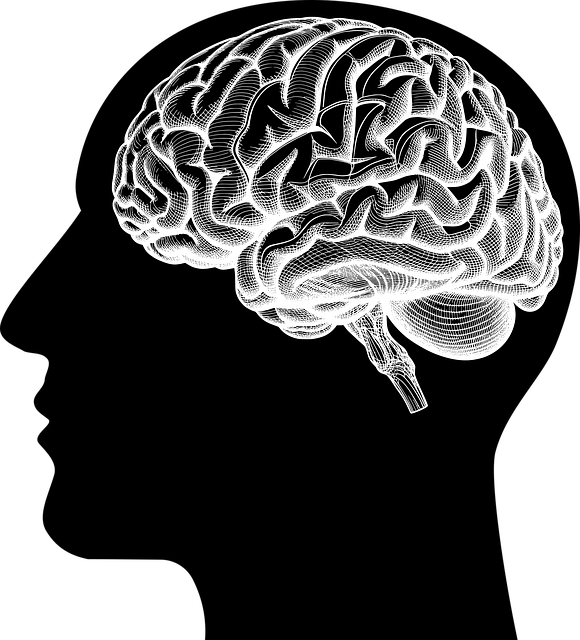Understanding mental health data is a multi-faceted process that begins with collecting diverse information through surveys, clinical assessments, and electronic records. The preparation phase involves cleaning and organizing data for accuracy, while self-awareness exercises and conflict resolution techniques enrich qualitative insights. Analyzing anxiety trends offers powerful tools to target therapy for anxiety, identify demographic hotspots, and develop effective resource allocation strategies. Public awareness campaigns, mental wellness podcasts, and journaling exercises further enhance this process by spreading knowledge and gathering diverse data. Interpreting therapy outcomes is crucial for refining practices, preventing healthcare professional burnout, and ultimately providing tailored anxiety relief.
Mental health data analysis is a powerful tool for understanding and improving therapeutic outcomes, especially in treating common issues like anxiety. This article explores the process of analyzing mental health data, from collecting and preparing raw information to uncovering complex trends and evaluating therapy effectiveness. We delve into statistical methods tailored for mental health research while highlighting critical ethical considerations and privacy safeguards essential in this sensitive domain, with a specific focus on anxiety disorders and their treatment.
- Understanding Mental Health Data: Collection and Preparation
- Analyzing Anxiety Trends: Uncovering Patterns and Insights
- Interpreting Outcomes: Evaluating the Effectiveness of Therapy
- Statistical Methods for Mental Health Research
- Ethical Considerations in Data Analysis and Privacy
Understanding Mental Health Data: Collection and Preparation

Understanding Mental Health Data is a multifaceted process, crucial for unraveling insights into individuals’ psychological well-being. It begins with data collection, where various methods such as surveys, clinical assessments, and electronic health records contribute to a comprehensive dataset. These sources offer valuable information about symptoms, behaviors, and experiences that impact mental health, including anxiety disorders. For instance, therapy for anxiety often involves tracking specific symptoms over time, which can be effectively captured through structured questionnaires or app-based assessments.
The preparation stage involves cleaning and organizing the data to ensure accuracy and consistency. This may include handling missing values, correcting errors, and transforming data into suitable formats for analysis. Self-awareness exercises and coping skills development, often part of therapeutic practices, can also be incorporated into the data collection process, providing deeper insights into individuals’ strategies for managing anxiety and other mental health concerns. Conflict resolution techniques might further enhance these efforts by identifying underlying issues that contribute to psychological distress, thereby enriching the dataset with qualitative information alongside quantitative metrics.
Analyzing Anxiety Trends: Uncovering Patterns and Insights

Analyzing Anxiety Trends provides a powerful tool for understanding and addressing mental health challenges, particularly anxiety disorders. Through data collection and meticulous interpretation, researchers and professionals can uncover hidden patterns and insights that inform effective interventions. By examining trends over time, it becomes possible to identify rising or declining rates of anxiety, pinpointing specific demographics or regions where the issue is most prevalent. This knowledge drives the development of targeted therapy for anxiety, ensuring resources are allocated optimally to meet diverse needs.
Public Awareness Campaigns Development and Mental Wellness Podcast Series Production can further enhance this process by disseminating information and fostering open dialogue about anxiety. Encouraging Mental Wellness Journaling Exercises also plays a vital role, empowering individuals to track their own experiences and contribute qualitative data that complements quantitative analyses. These collective efforts not only increase public awareness but also enrich the data landscape, enabling more nuanced and impactful solutions for managing and preventing anxiety disorders.
Interpreting Outcomes: Evaluating the Effectiveness of Therapy

Interpreting the outcomes of therapy is a critical step in understanding its effectiveness for treating mental health conditions like anxiety. The journey from diagnosis to recovery involves meticulous data analysis, where therapists assess changes in patient symptoms, behaviors, and overall well-being. By comparing initial assessment data with subsequent measurements, professionals can gauge the progress made during therapy sessions. This process enables them to identify successful interventions, such as specific techniques or therapeutic approaches that offer substantial Anxiety Relief.
For healthcare providers focusing on burnout prevention, evaluating therapy outcomes is equally crucial. Regularly monitoring patient improvements not only helps in measuring individual success but also contributes to refining Burnout Prevention Strategies. By analyzing data, therapists can tailor their practices to meet diverse needs, ensuring more efficient and effective Therapy for Anxiety and promoting a healthier work environment for healthcare professionals.
Statistical Methods for Mental Health Research

Mental health researchers employ a range of statistical methods to analyze and interpret data effectively. These methods play a crucial role in understanding complex mental health issues, evaluating therapy for anxiety disorders, and tailoring interventions accordingly. For instance, randomized controlled trials (RCTs) are commonly used to assess the efficacy of treatments like Mindfulness Meditation in managing symptoms of Anxiety. By comparing outcomes between treatment and control groups, researchers can quantify the impact of specific therapies.
Moreover, advanced statistical techniques such as regression analysis help identify key predictors of mental health outcomes. This enables professionals to conduct risk assessments for Mental Health Professionals by considering factors like demographics, past experiences, and current life stressors. Such insights are vital for enhancing prevention strategies and improving overall mental well-being in diverse populations.
Ethical Considerations in Data Analysis and Privacy

In the realm of mental health data analysis, ethical considerations are paramount, especially when dealing with sensitive information related to therapy for anxiety and other conditions. As researchers delve into vast datasets, they must navigate complex privacy issues. Anonymization techniques are crucial to protect individuals’ identities while enabling valuable insights to emerge from the data. This balance ensures that the benefits of analysis outweigh potential risks, fostering a culture of responsible research practices.
Furthermore, effective communication strategies play a vital role in maintaining trust. Healthcare providers and researchers must be transparent about data collection methods and purposes, ensuring patients understand their rights. Promoting positive thinking and open dialogue can mitigate burnout prevention strategies for healthcare providers, who often bear the brunt of this sensitive work. Ethical guidelines and ongoing education are essential tools to safeguard privacy and foster a supportive environment in mental health data interpretation.
Mental health data analysis is a powerful tool for understanding and improving therapy outcomes, particularly in treating anxiety. By employing statistical methods and ethical considerations, researchers can uncover valuable insights from collected data, guiding more effective treatments. This article has explored the process from data preparation to interpretation, highlighting the significance of each step in enhancing our understanding of mental health conditions like anxiety and optimizing Therapy for Anxiety.










